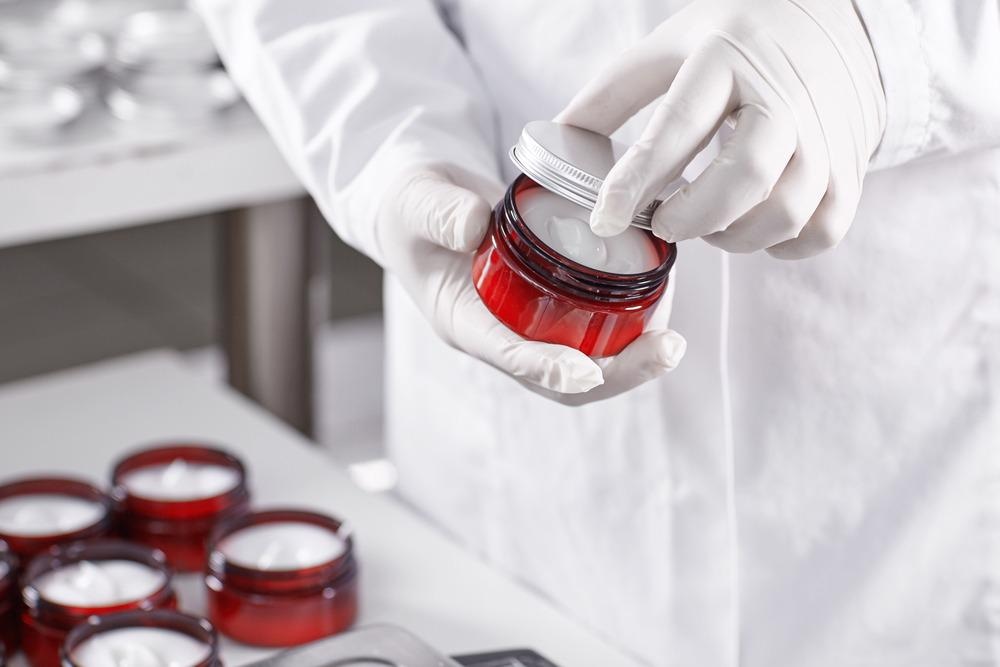A state-of-the-art method to detect traces of gold (Au) in skincare products using Al/Mg layered graphene nanocomposite is presented in the research available as a pre-proof in the journal Talanta.

Study: Determination of ultra-trace gold in cosmetics using aluminum-magnesium layered double hydroxide/graphene oxide nanocomposite. Image Credit: WAYHOME studio/Shutterstock.com
Gold in Skincare Products – Goodbye Sunscreen?
In the past few years, an increasing amount of discussion concerning the therapeutic qualities of gold (Au) in skincare products has been taking place.
Au nanoparticles may improve skin defense against ultra-violet (UV) rays and could be utilized in place of titanium dioxide particles, which are already in operation. Furthermore, Au nanoparticles may prevent the glycation of proteins, particularly collagen, a leading cause of aging.
Au nanoparticles show antioxidant activity when combined with epigallocatechin gallate (EGCG) α-lipoic acid (ALA).
These qualities of Au stated above enable nanoparticles to be utilized in many forms of skincare products, particularly as an agent to prevent aging. As a result, an increasing number of skincare companies state on their labels that the products being endorsed include Au.
Determining Gold Traces
Inductively coupled plasma mass spectrometry (ICP-MS) is among several effective methods for elemental composition analysis. Lately, single-particle (SP) ICP-MS has been widely employed for ultra-trace examination of metallic NPs. Nonetheless, SP-ICP-MS is best suited for NPs with a single element and diameters ranging from 20nm to 1μm.
The diversity of metallic nanoparticles with varying sizes, forms, or surface coatings considerably complicates their examination by SP-ICP-MS. There are various ways of determining Au, but most of them cannot effectively identify metallic nanoparticles from corresponding ions.
Metallic nanoparticles and metallic ions often naturally interact. The most commonly utilized extraction procedures for these nanoparticles are solid-phase and liquid-liquid extraction.
To successfully preconcentrate Au ions, several sorbents are utilized. Although specimen preparation techniques for particle extraction are rapidly evolving, there are hardly any studies on the use of layered double hydroxides (LDH) for particle extraction and preconcentration.
The Brilliance of LDH
The distinctive construction and features of LDHs have piqued the curiosity of scientists in a variety of domains. The use of LDHs as extracting sorbents, color indicators, and anode/cathode materials is a hot topic in chemistry right now.
LDHs are a kind of 2D nanostructured material. The layers of metallic hydroxides in these substances which are positively charged are separated by charge-compensating anions and molecules of water. Because LDHs may interchange anions, they are utilized to extract and identify many kinds of environmental pollutants.
LDHs have a very high anion exchange density and stability. They may be synthesized in a variety of methods, and the technique used to synthesize LDHs has a substantial impact on the morphology and characteristics of the resulting products.
A New Way to Synthesize
The study demonstrates a novel approach for determining Au traces in selected skincare goods that are based on dispersive micro-solid phase extraction (DMSPE) and solvent-free EDXRF analyses.
It is noted that depending on pH, the produced nanocomposite may effectively adsorb both ions and nanoparticles associated with Au. Since it is hard to determine ultra-trace levels of Au in skincare products directly, they must be dissolved in nitric and hydrochloric acid.
Different Au species found in skincare products were transformed into AuCl4 species. As a consequence of the dissolving process, the new species is readily adsorbed on MgAl-LDH/GO and concurrently removed from the medium. To evaluate the Au content, 16 different skincare products (cream, serum, mask) of various skincare companies and costs were studied.
Results of the Study
The team presented a novel MgAl-LDH/GO nanomaterial in the study. The nanomaterial exhibited sorption characteristics towards Au (III) ions from solutions with pH values ranging from 1-2 and towards AuNPs ions from solutions with pH values ranging from 1-5.
According to research, AuNPs may be detected in the presence of Au (III) ions at pH 5. Au absorbed very quickly on the sorbent. The team noted that owing to the immediate detection of Au on MgAl-LDH/GO nanomaterial without the need for a solvent, the coupling of the created DSMPE with EDXRF testing was ecologically safe. As a result, the created approach provided advantages in regards to time, energy consumption, and cost.
The discovered approach was utilized effectively to detect ultra-trace Au in skincare products. The research revealed that not every specimen reportedly containing Au, actually contained this element.
Just a few manufacturers had skincare products that actually contained Au. The team also discovered that if Au was detected in one product of a specific manufacturer, it was also detected in various other products of that same manufacturer.
Reference
Zawisza, B., Sitko, R., & Gagor, A. (2022). Determination of ultra-trace gold in cosmetics using aluminum-magnesium layered double hydroxide/graphene oxide nanocomposite. Talanta. Available at: https://www.sciencedirect.com/science/article/pii/S0039914022002569?via%3Dihub.
Disclaimer: The views expressed here are those of the author expressed in their private capacity and do not necessarily represent the views of AZoM.com Limited T/A AZoNetwork the owner and operator of this website. This disclaimer forms part of the Terms and conditions of use of this website.